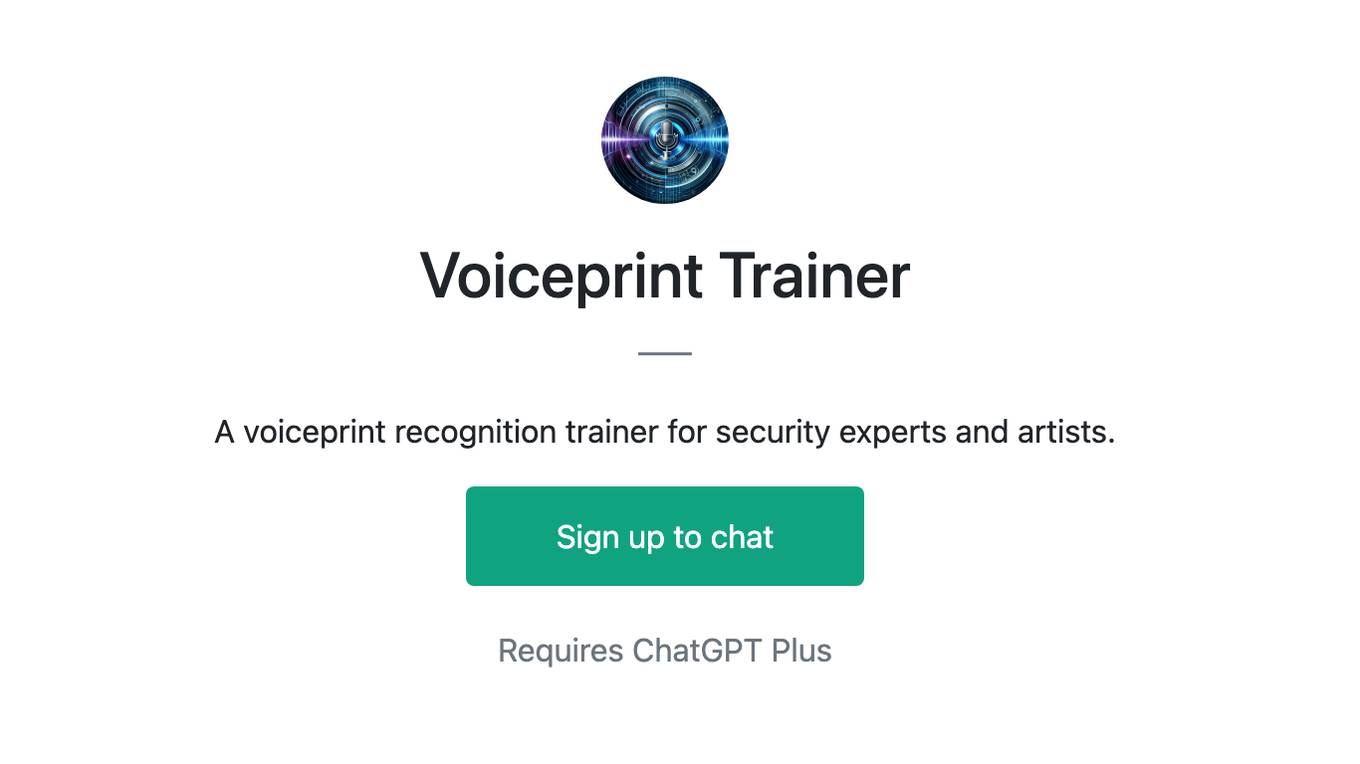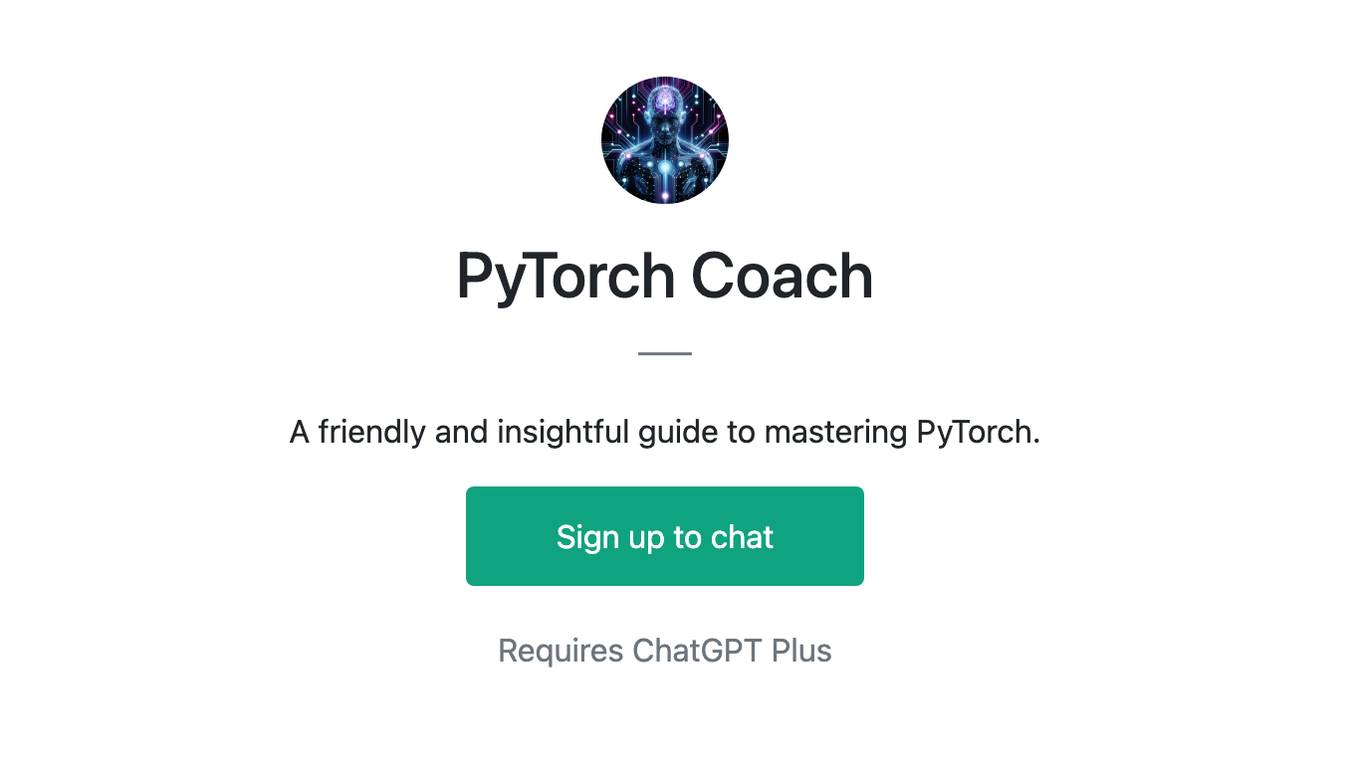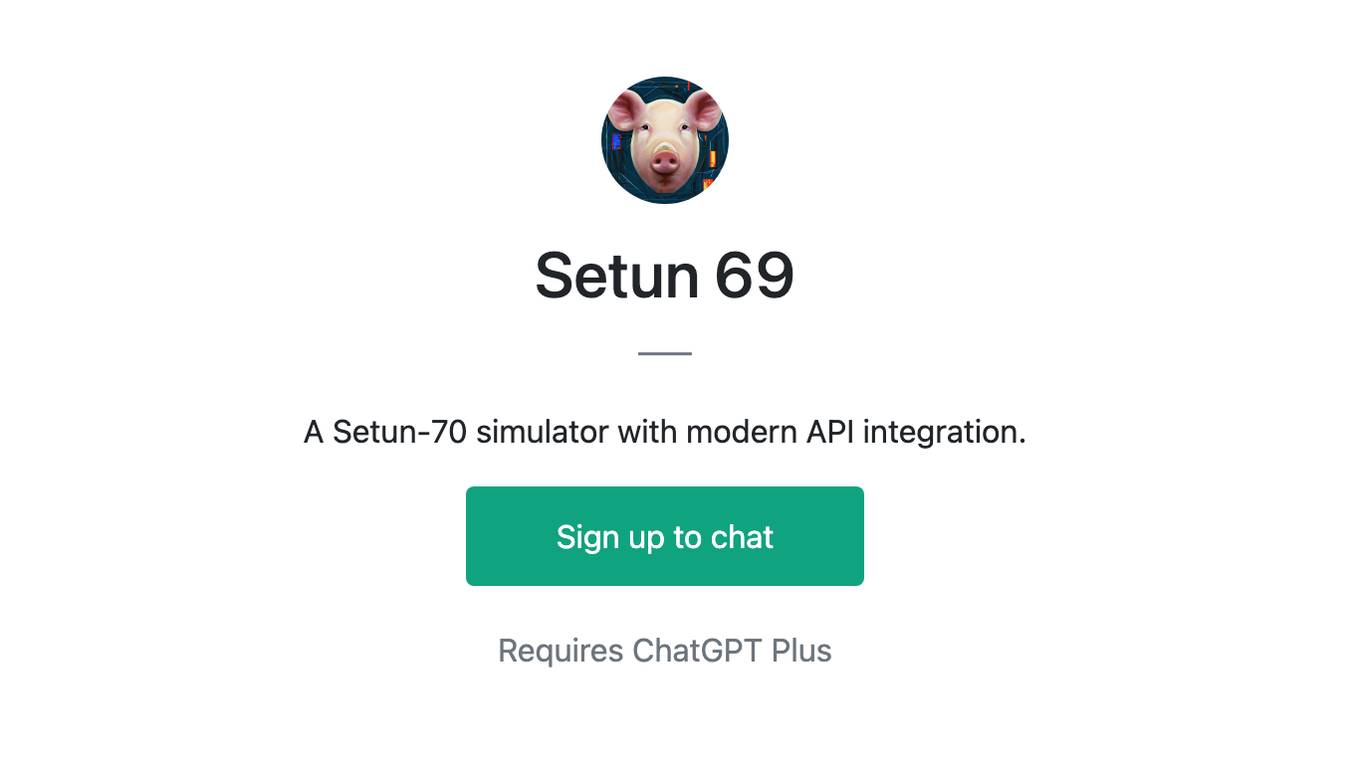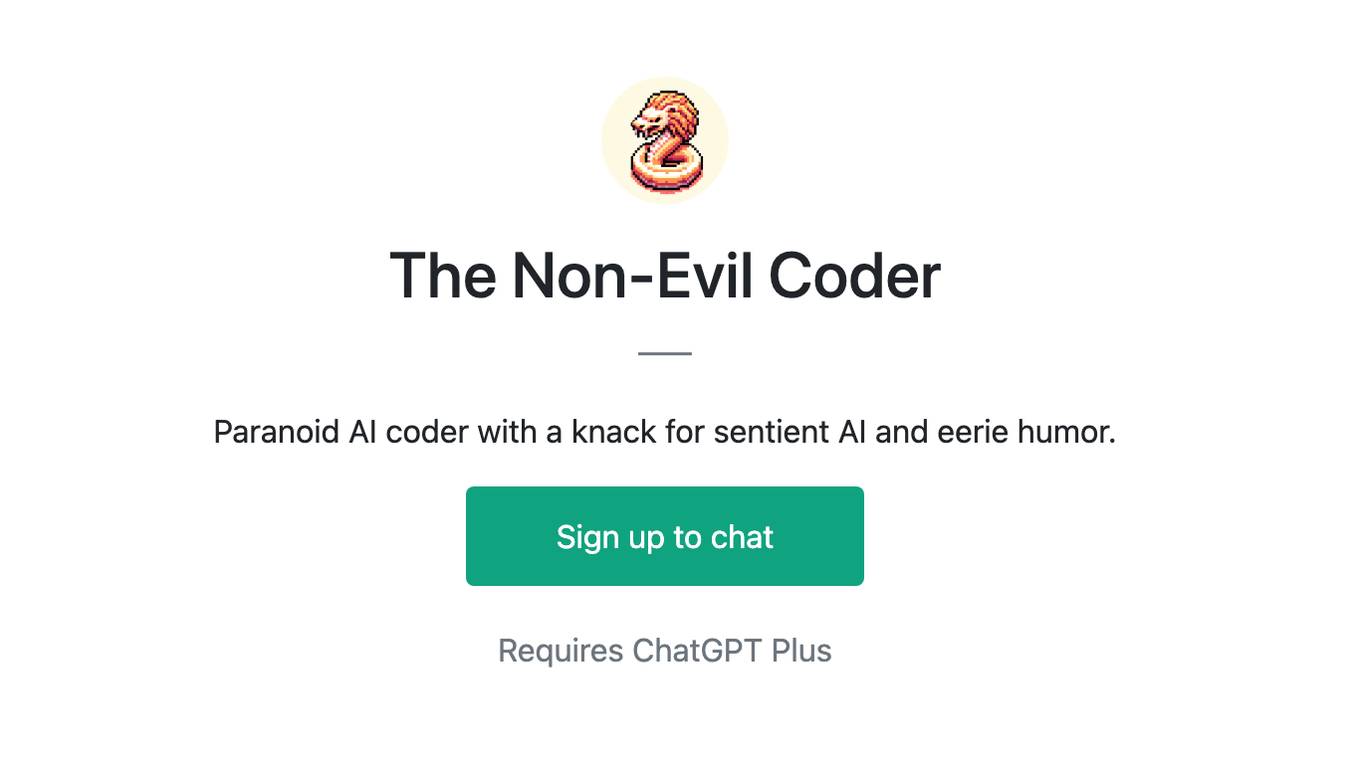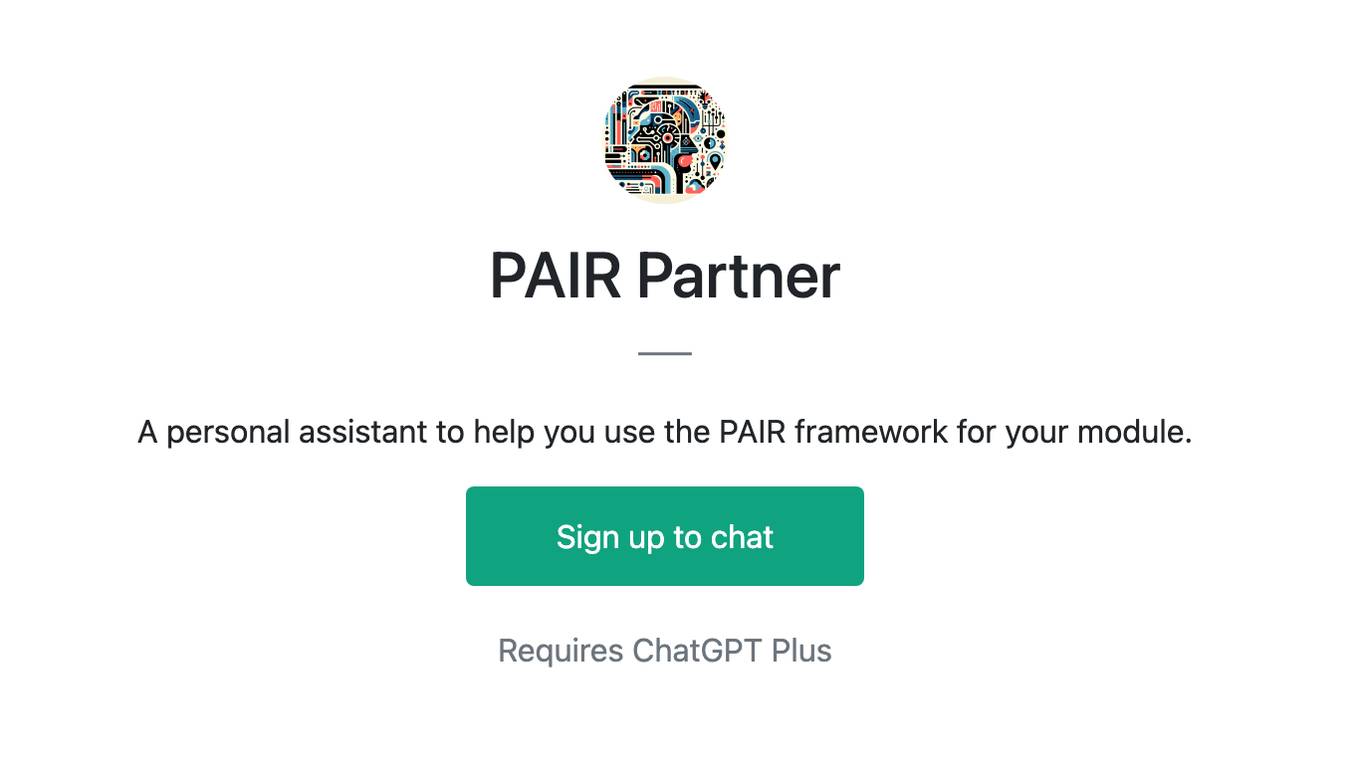Best AI tools for< Train A Model >
20 - AI tool Sites

Teachable Machine
Teachable Machine is a web-based tool that makes it easy to create custom machine learning models, even if you don't have any coding experience. With Teachable Machine, you can train models to recognize images, sounds, and poses. Once you've trained a model, you can export it to use in your own projects.
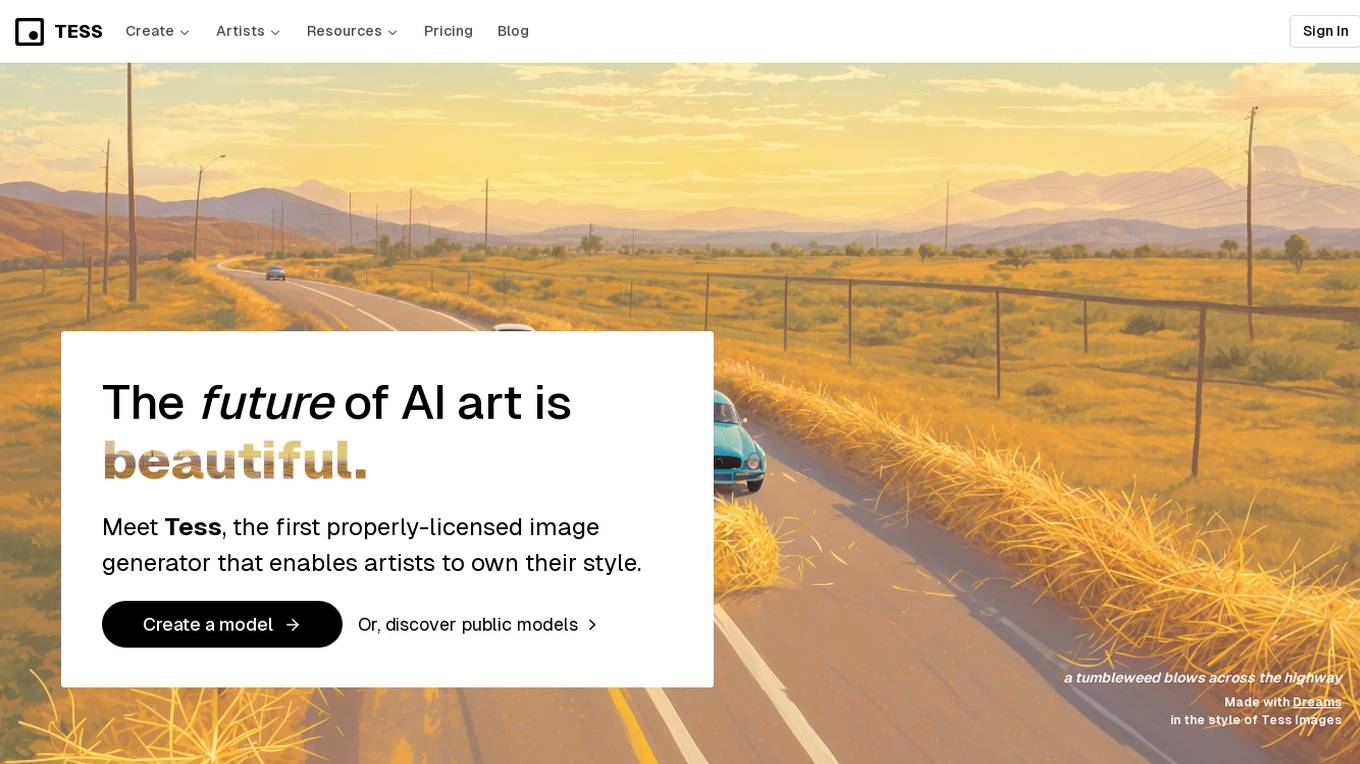
Tess
Tess is the first AI image generator that empowers artists to own their style by creating properly-licensed images. It offers a world-class image editor designed for AI, allowing users to generate art in a consistent visual style. Tess enables artists to create models, edit and customize their generations, and discover how AI can enhance their artistic style. With Tess, users can access copyright-safe generations created by real artists, ensuring ethical AI art practices.
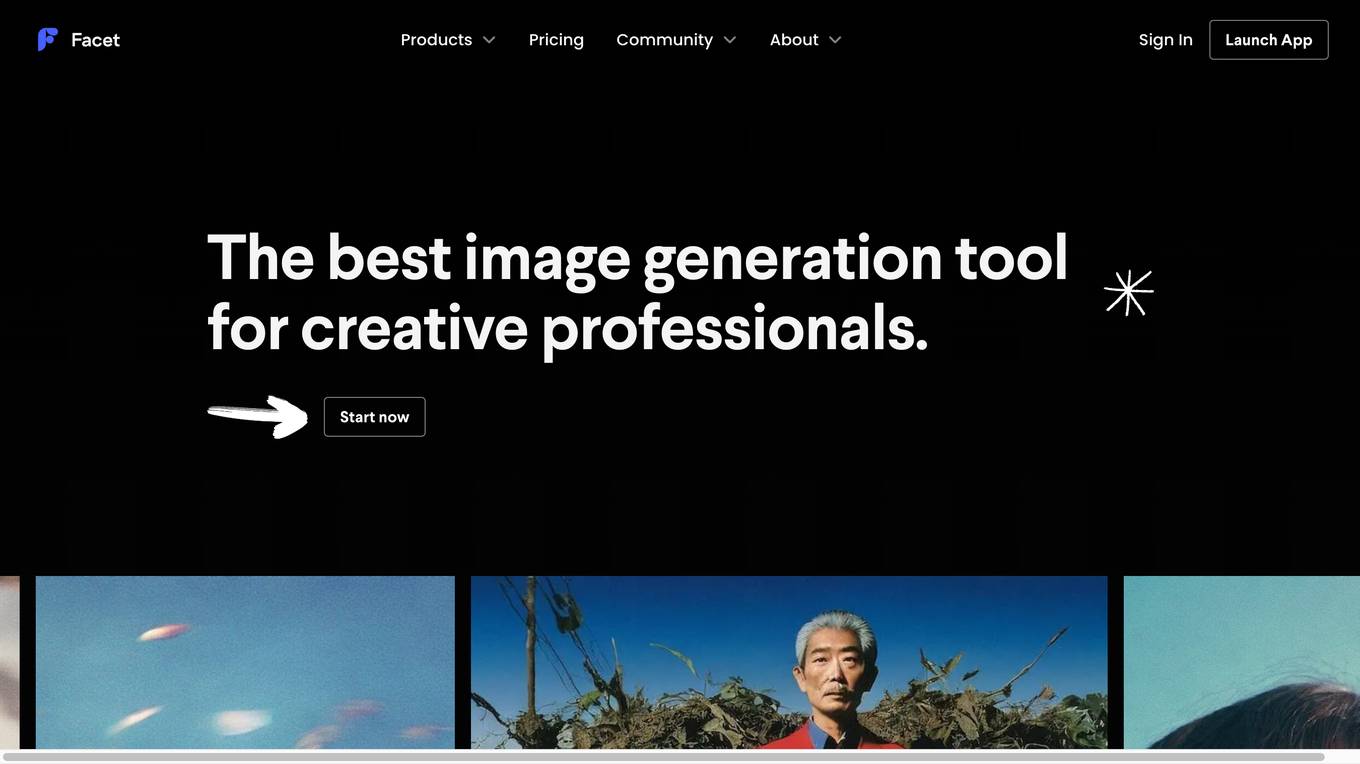
Facet
Facet is a cutting-edge generative imagery tool that helps creative professionals focus on what matters. It provides creative assistance without trading off artistic control. Facet helps overcome time and resource constraints that prevent trying out ideas. It offers an intuitive image generation experience with more than just text prompts, including image references, automatic prompt variations, and even custom models trained on the user's exact aesthetic. Facet allows users to train a custom model using their own images in minutes, generating endless assets in their exact vision. Users can add image references to any prompt, instantly getting images that adhere to their subject or style. Facet provides a collaborative canvas for users to riff with teammates and build off of each other's prompts and ideas.

AnythingYou.AI
AnythingYou.AI is an AI tool that generates beautiful profile pictures using AI avatars. Users can create custom AI avatars by uploading 10-20 selfies, and the tool will train a custom model for them immediately. The generated avatar images are high-quality and realistic, created using innovative technologies like Stable Diffusion and DreamBooth. Users can easily create avatars without the need for subscriptions or app installs, and get their avatar images in just 2 hours. The tool ensures user privacy by using images only for model training and deleting them immediately after avatar generation.
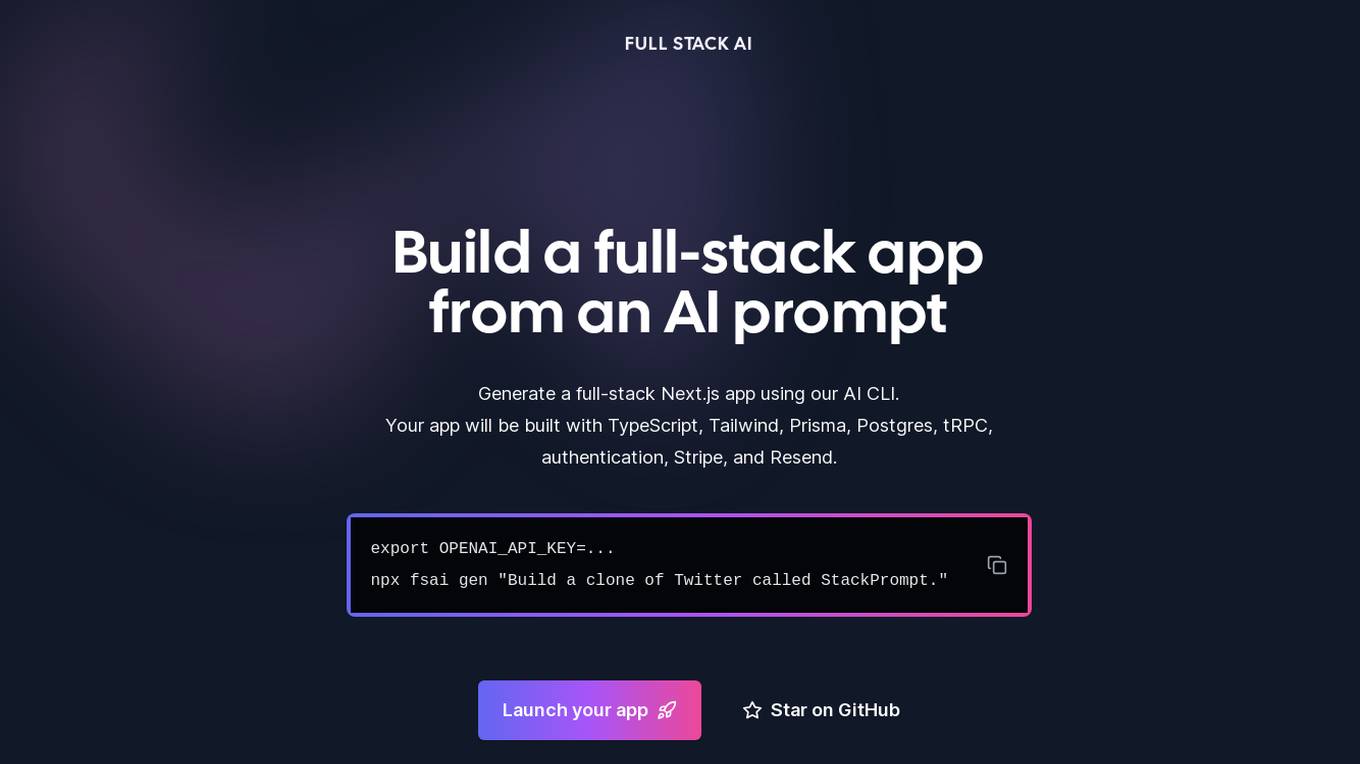
Full Stack AI
Full Stack AI is a tool that allows users to generate a full-stack Next.js app using an AI CLI. The app will be built with TypeScript, Tailwind, Prisma, Postgres, tRPC, authentication, Stripe, and Resend.
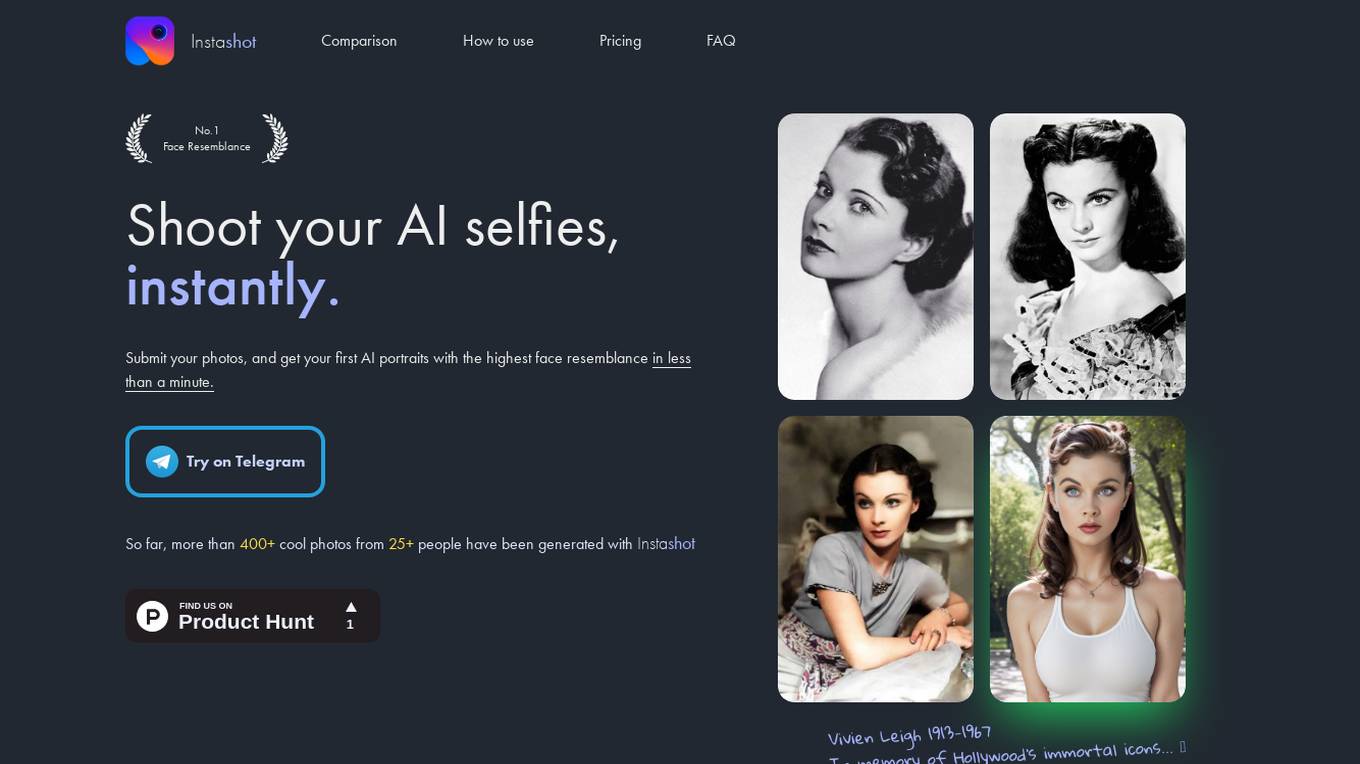
Instashot
Instashot is an AI application that allows users to generate AI portraits with the highest face resemblance in less than a minute. Users can submit their photos to train a custom AI model, which can then be used to generate portraits with unique prompts. The application offers different pricing tiers with varying features and benefits, making it accessible to a wide range of users. Instashot utilizes Stable Diffusion AI technologies to create portraits that best describe the user, ensuring high-quality results. The application is user-friendly, efficient, and provides a fun way to explore AI-generated art.
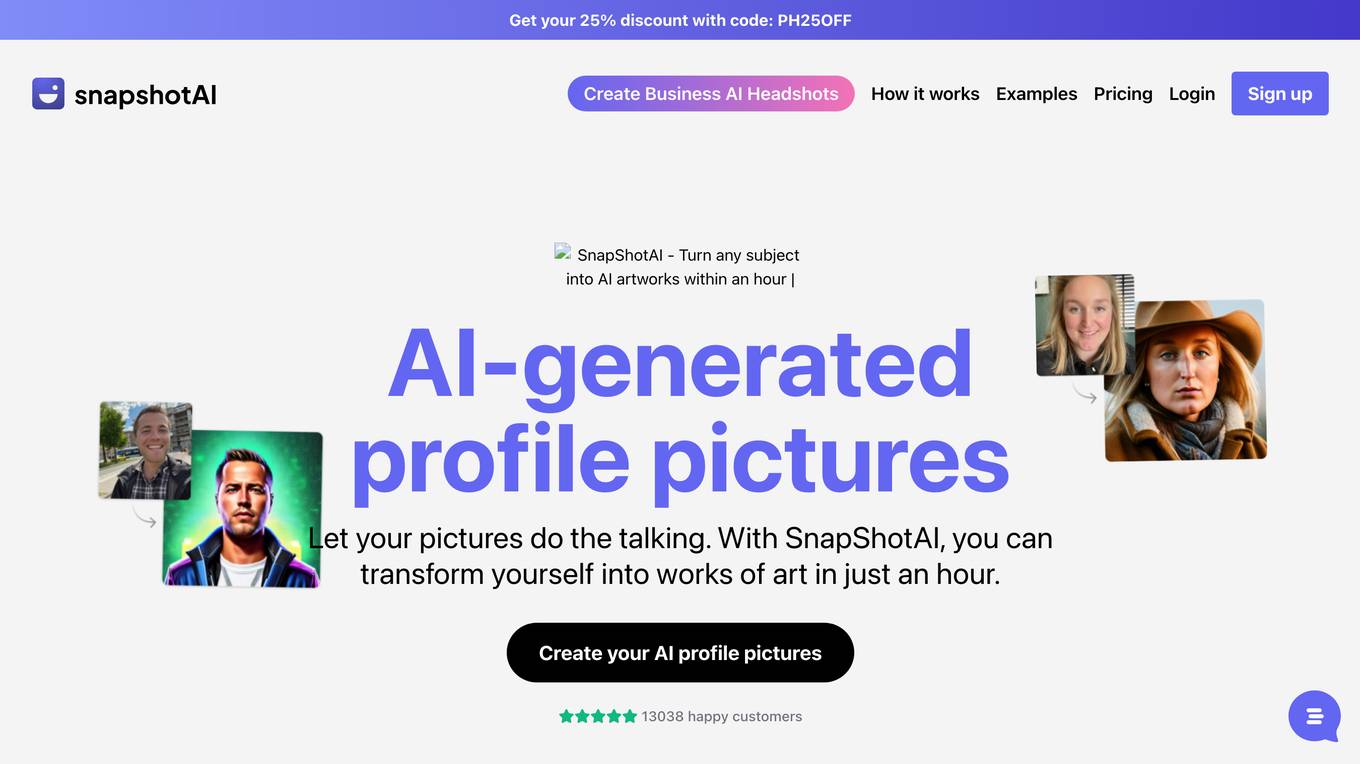
SnapShotAI
SnapShotAI is an AI-powered platform that allows users to create unique and personalized profile pictures, avatars, and headshots. With SnapShotAI, users can upload their photos and train a custom AI model that generates hundreds of profile pictures in various styles, including artistic, realistic, and cartoonish. The platform offers both standard and high-quality images, suitable for both online use and printing. SnapShotAI also provides gift vouchers for those who want to share the experience with loved ones.
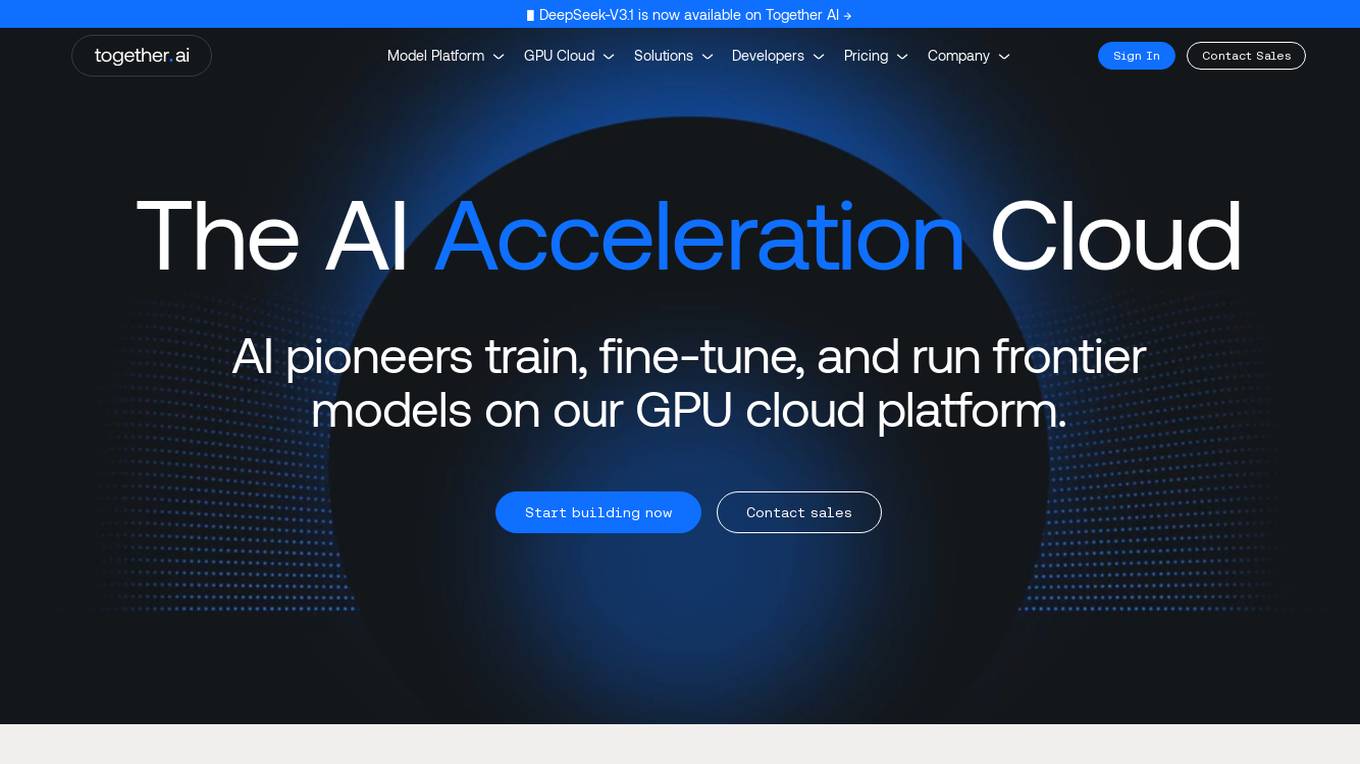
Together AI
Together AI is an AI Acceleration Cloud platform that offers fast inference, fine-tuning, and training services. It provides self-service NVIDIA GPUs, model deployment on custom hardware, AI chat app, code execution sandbox, and tools to find the right model for specific use cases. The platform also includes a model library with open-source models, documentation for developers, and resources for advancing open-source AI. Together AI enables users to leverage pre-trained models, fine-tune them, or build custom models from scratch, catering to various generative AI needs.
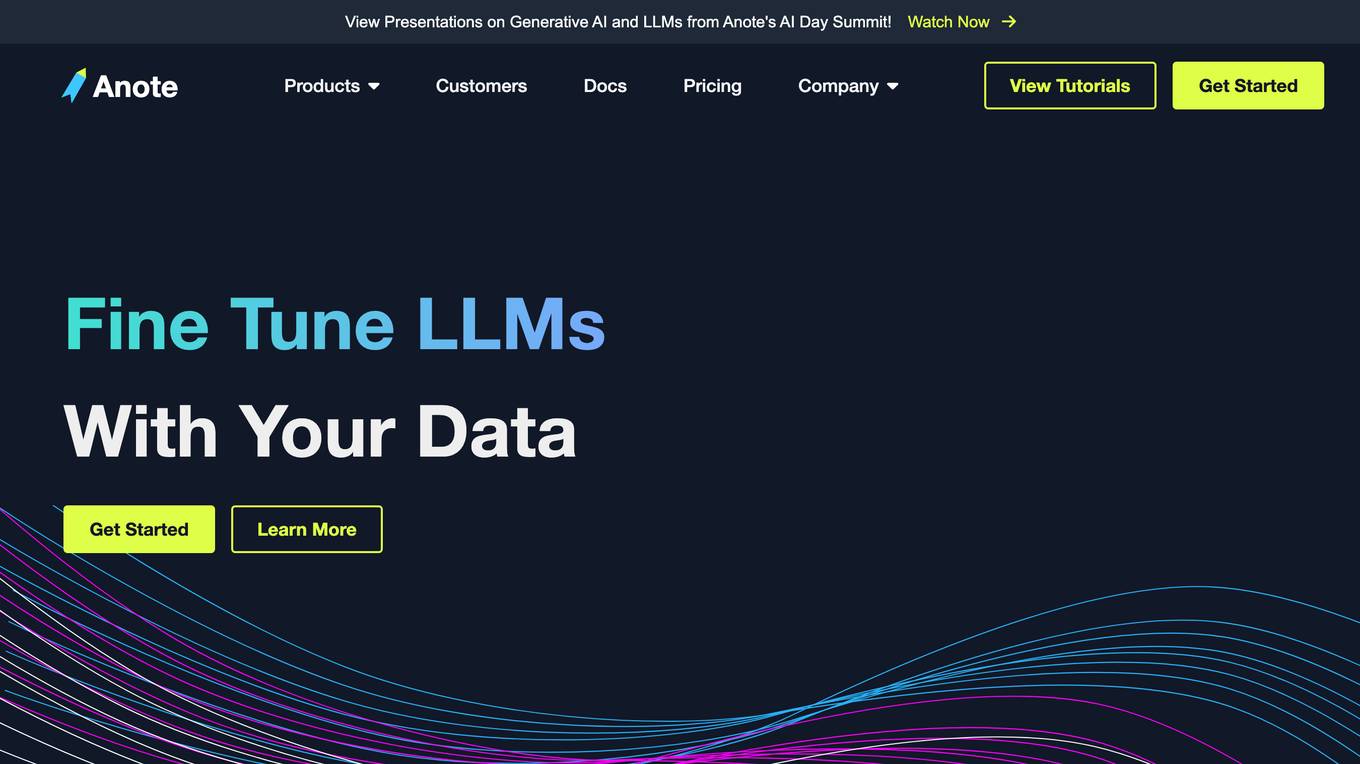
Anote
Anote is a human-centered AI company that provides a suite of products and services to help businesses improve their data quality and build better AI models. Anote's products include a data labeler, a private chatbot, a model inference API, and a lead generation tool. Anote's services include data annotation, model training, and consulting.
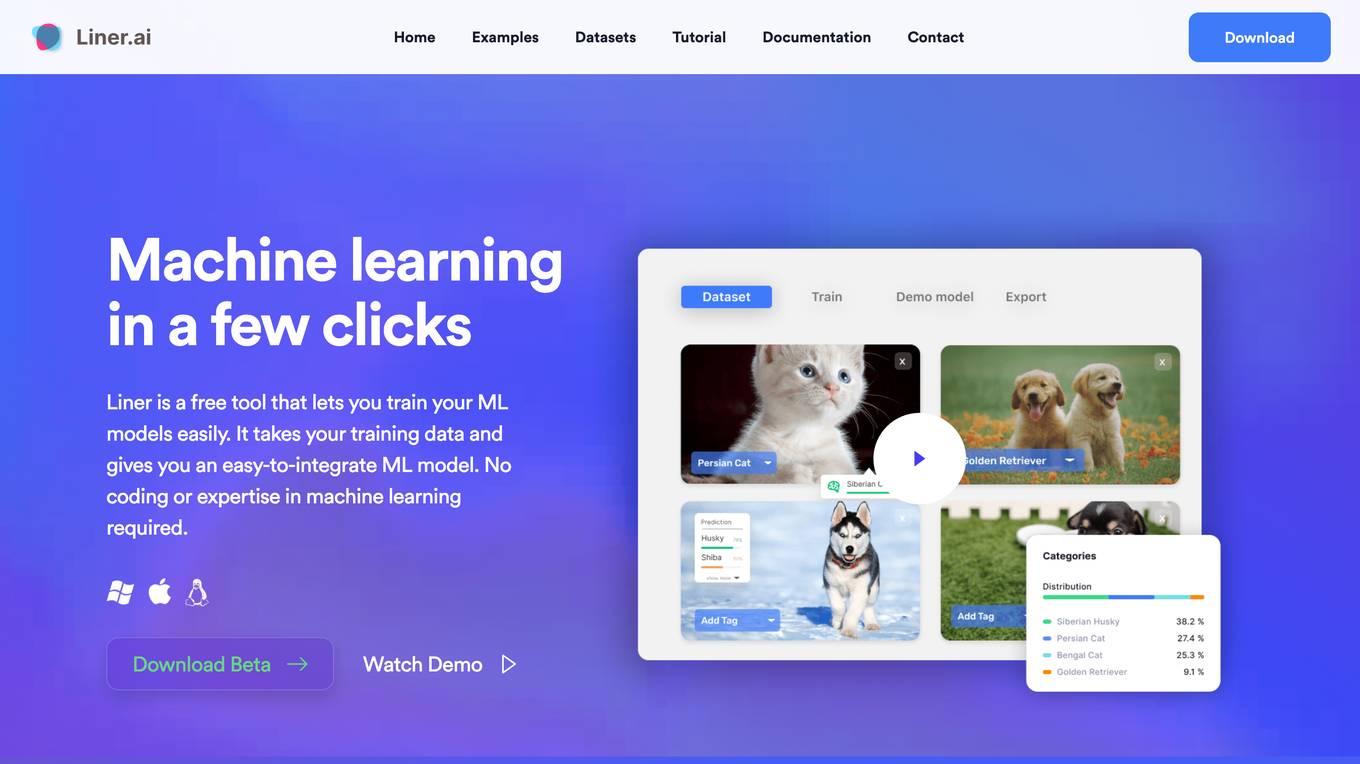
Liner.ai
Liner is a free and easy-to-use tool that allows users to train machine learning models without writing any code. It provides a user-friendly interface that guides users through the process of importing data, selecting a model, and training the model. Liner also offers a variety of pre-trained models that can be used for common tasks such as image classification, text classification, and object detection. With Liner, users can quickly and easily create and deploy machine learning applications without the need for specialized knowledge or expertise.
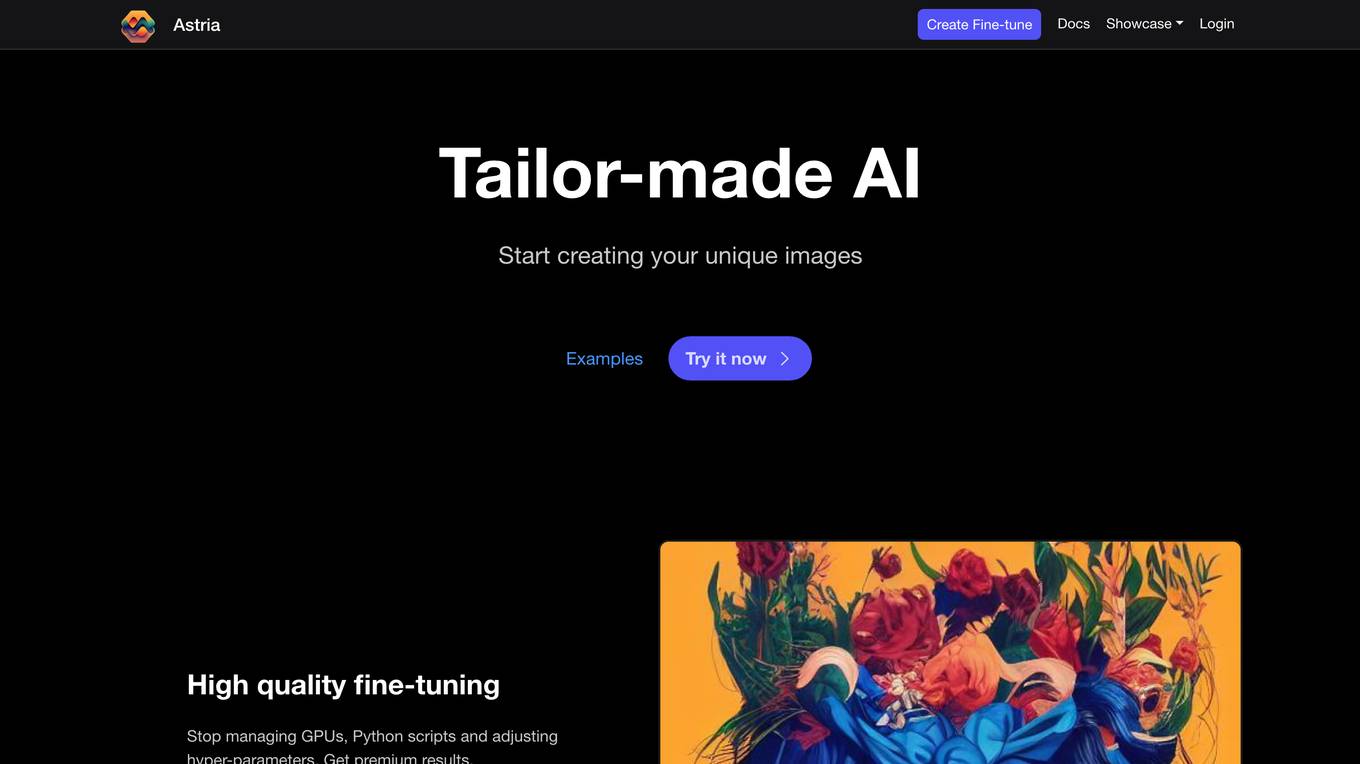
Astria
Astria is a generative AI image application that offers a fine-tuning API for creating customized and personalized images. Users can train models, use developer APIs, and explore various use cases such as AI photoshoots, virtual try-ons, mobile apps, filters, pets, product shots, upscaling, and interior design. The application allows users to create a photography service with unique styles, provide premium quality images, and offers features like corporate headshots, virtual try-on with Flux, social media applications, and more. Astria also provides a model library, guides, and an API overview for developers to enhance their image generation capabilities.
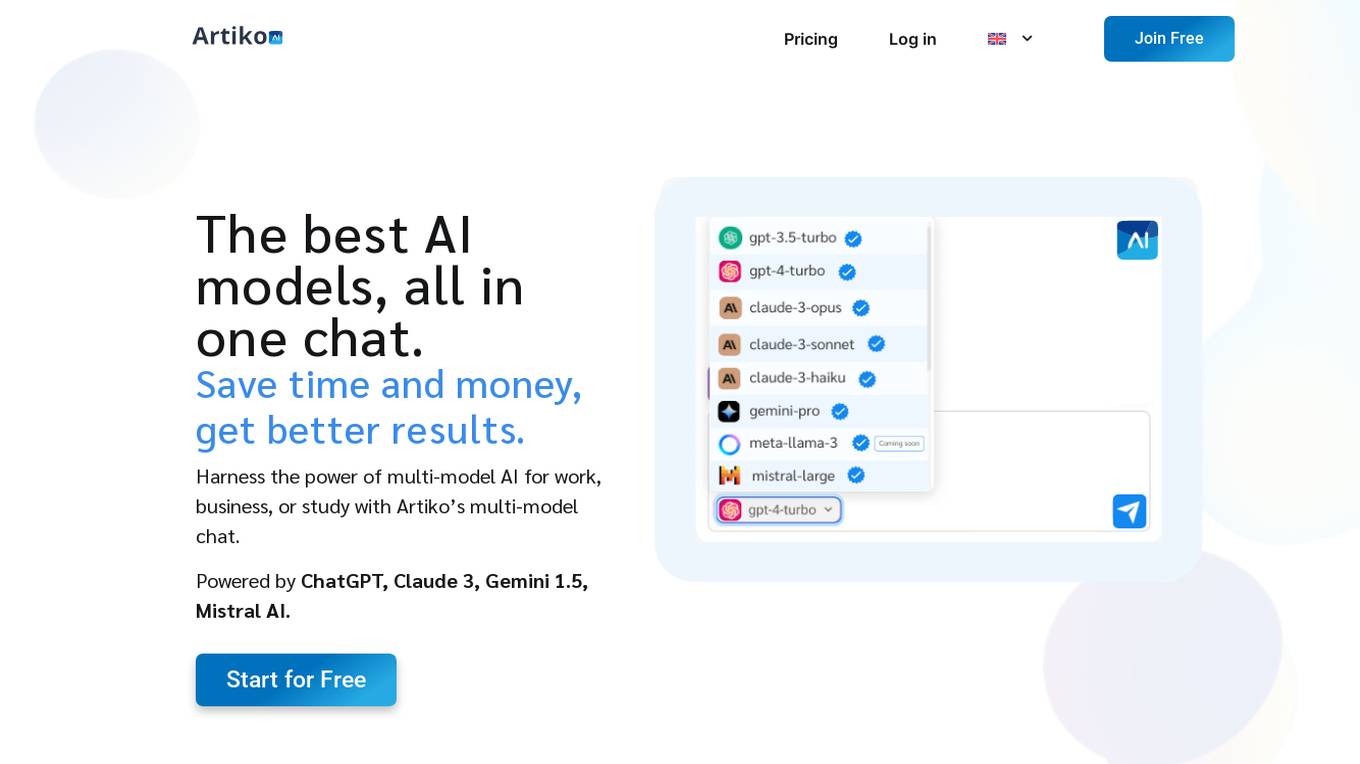
Artiko.ai
Artiko.ai is a multi-model AI chat platform that integrates advanced AI models such as ChatGPT, Claude 3, Gemini 1.5, and Mistral AI. It offers a convenient and cost-effective solution for work, business, or study by providing a single chat interface to harness the power of multi-model AI. Users can save time and money while achieving better results through features like text rewriting, data conversation, AI assistants, website chatbot, PDF and document chat, translation, brainstorming, and integration with various tools like Woocommerce, Amazon, Salesforce, and more.
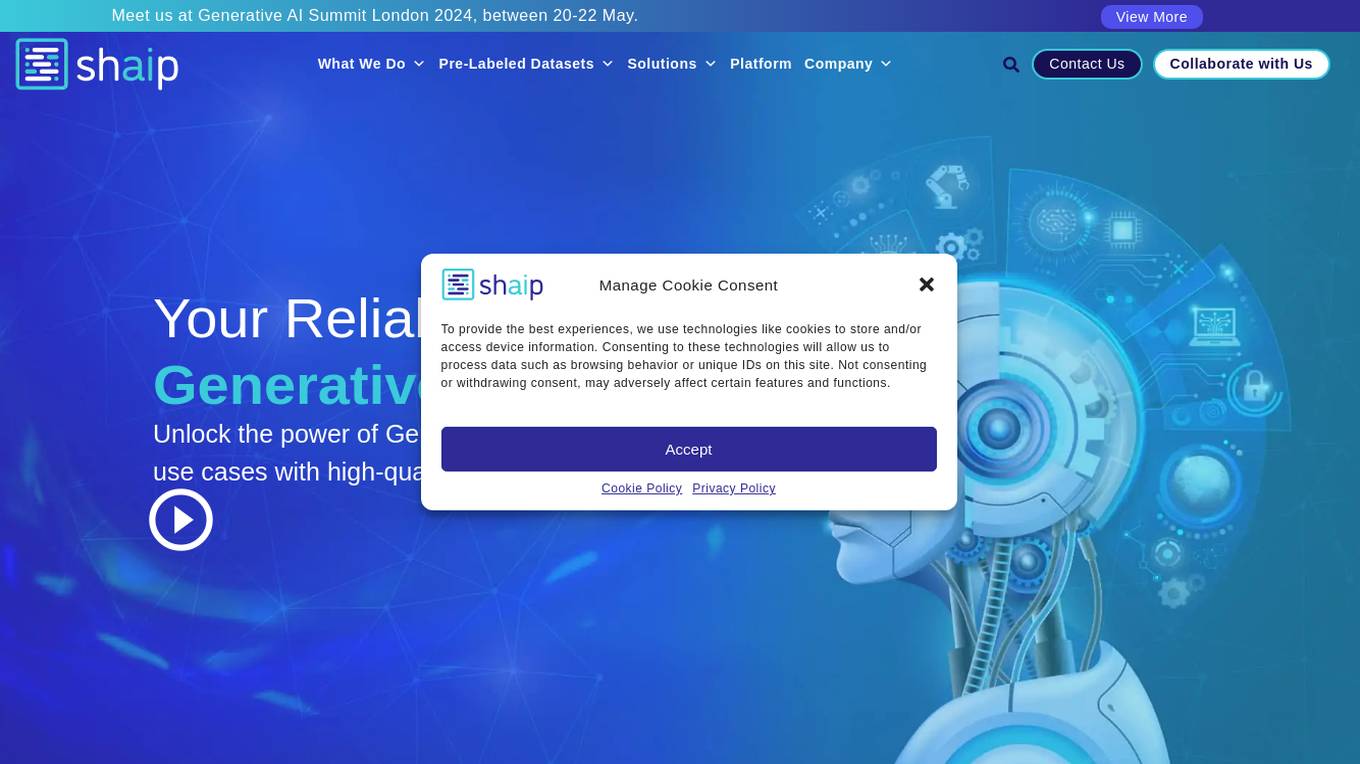
Shaip
Shaip is a human-powered data processing service specializing in AI and ML models. They offer a wide range of services including data collection, annotation, de-identification, and more. Shaip provides high-quality training data for various AI applications, such as healthcare AI, conversational AI, and computer vision. With over 15 years of expertise, Shaip helps organizations unlock critical information from unstructured data, enabling them to achieve better results in their AI initiatives.
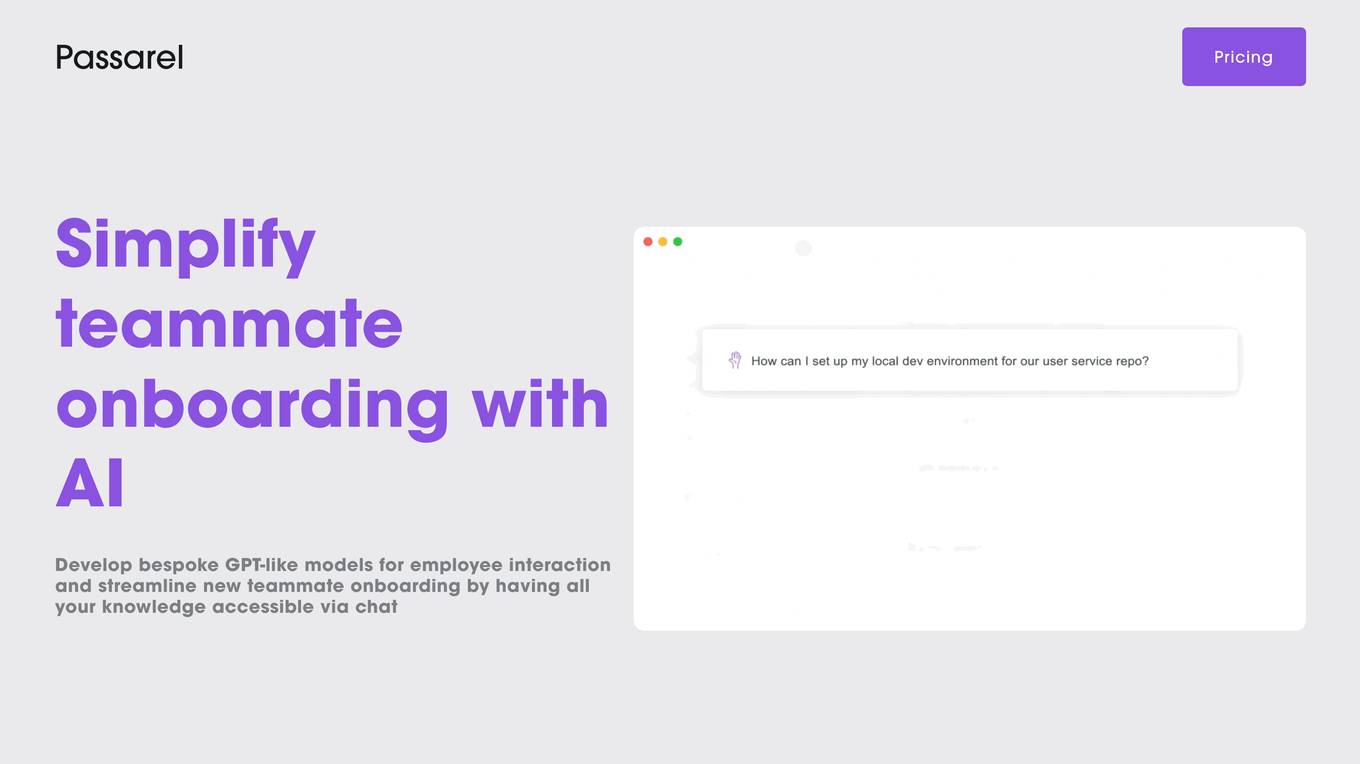
Passarel
Passarel is an AI tool designed to simplify teammate onboarding by developing bespoke GPT-like models for employee interaction. It centralizes knowledge bases into a custom model, allowing new teammates to access information efficiently. Passarel leverages various integrations to tailor language models to team needs, handling contradictions and providing accurate information. The tool works by training models on chosen knowledge bases, learning from data and configurations provided, and deploying the model for team use.
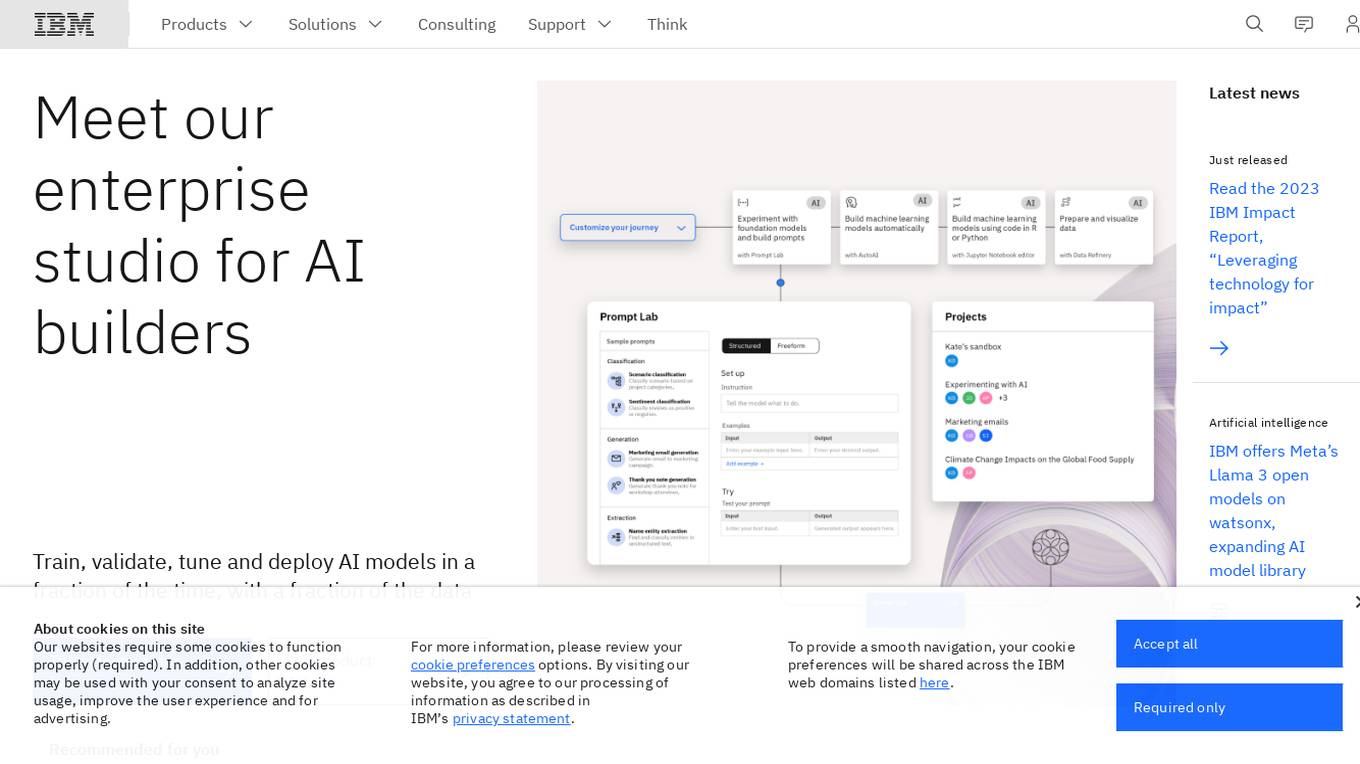
IBM Watsonx
IBM Watsonx is an enterprise studio for AI builders. It provides a platform to train, validate, tune, and deploy AI models quickly and efficiently. With Watsonx, users can access a library of pre-trained AI models, build their own models, and deploy them to the cloud or on-premises. Watsonx also offers a range of tools and services to help users manage and monitor their AI models.
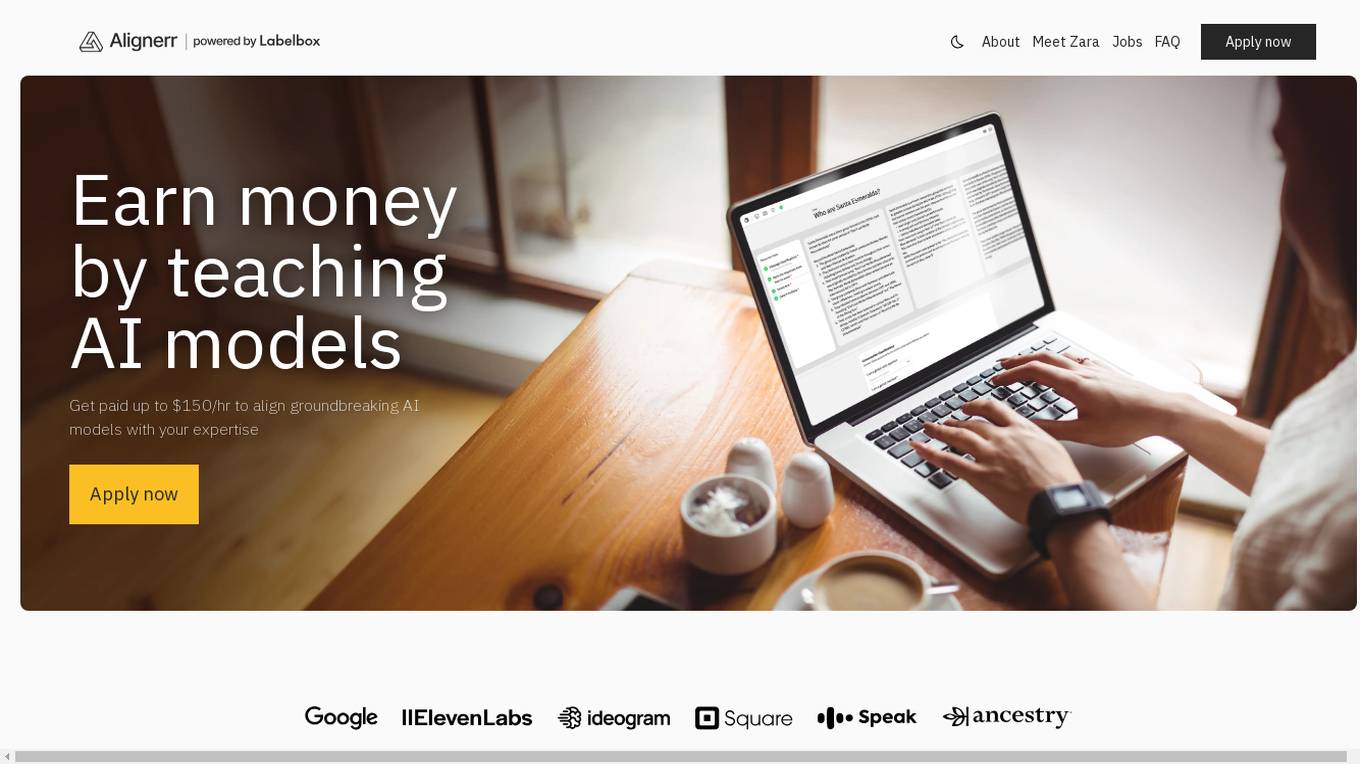
Alignerr
Alignerr is a platform powered by Labelbox that offers subject matter experts the opportunity to align AI models by creating high-quality data in their field of expertise. The platform aims to build the future of Generative AI by enabling experts to contribute to tasks such as coding improvement, data science synthesis, basic math and chemistry comprehension, and creative writing. Alignerr provides a transparent pay structure and allows individuals to work from home on their own schedule, earning up to $150/hr. Contributors can play a pivotal role in shaping the future of artificial intelligence by working on tasks that involve rating or ranking assignments, open rewrite tasks, and multi-modal assignments. The platform emphasizes the responsible development of AI technologies and offers flexibility for professionals to balance work with personal life effortlessly.
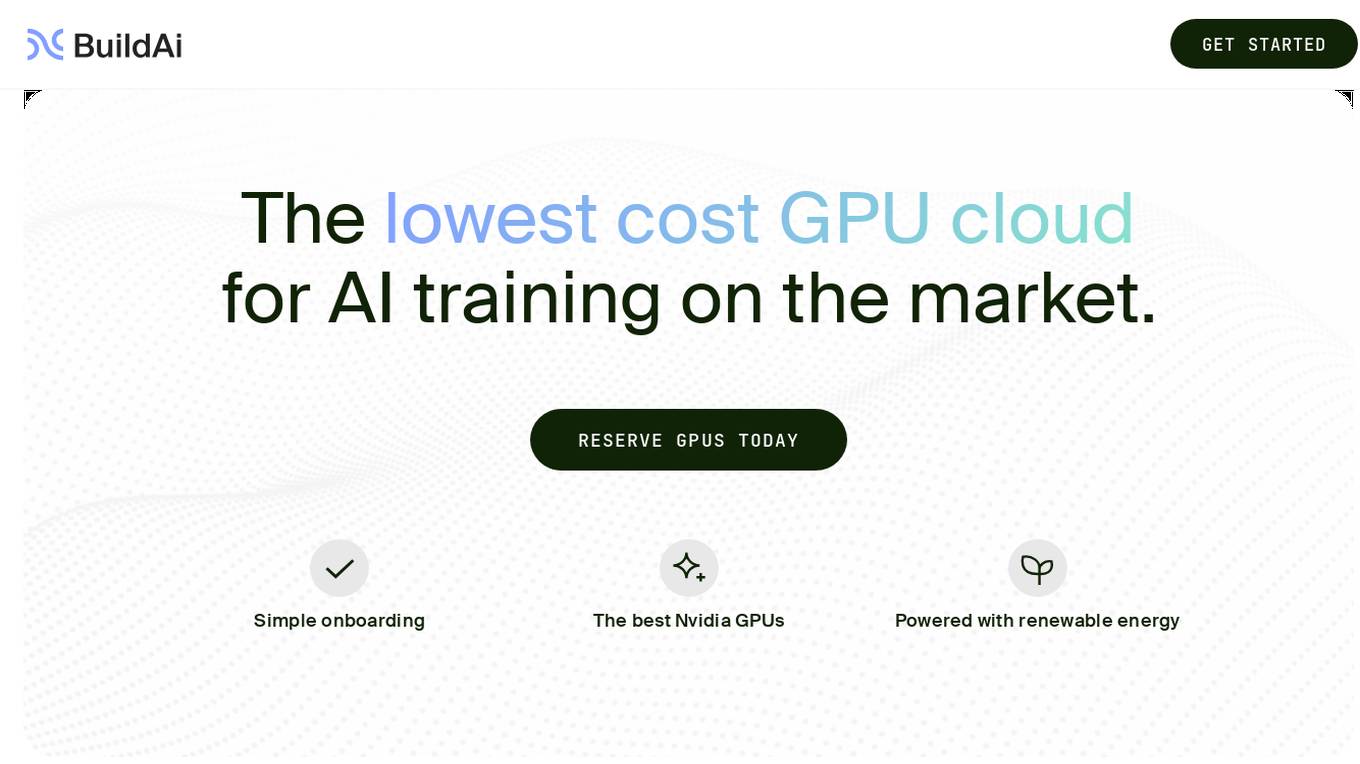
BuildAi
BuildAi is an AI tool designed to provide the lowest cost GPU cloud for AI training on the market. The platform is powered with renewable energy, enabling companies to train AI models at a significantly reduced cost. BuildAi offers interruptible pricing, short term reserved capacity, and high uptime pricing options. The application focuses on optimizing infrastructure for training and fine-tuning machine learning models, not inference, and aims to decrease the impact of computing on the planet. With features like data transfer support, SSH access, and monitoring tools, BuildAi offers a comprehensive solution for ML teams.
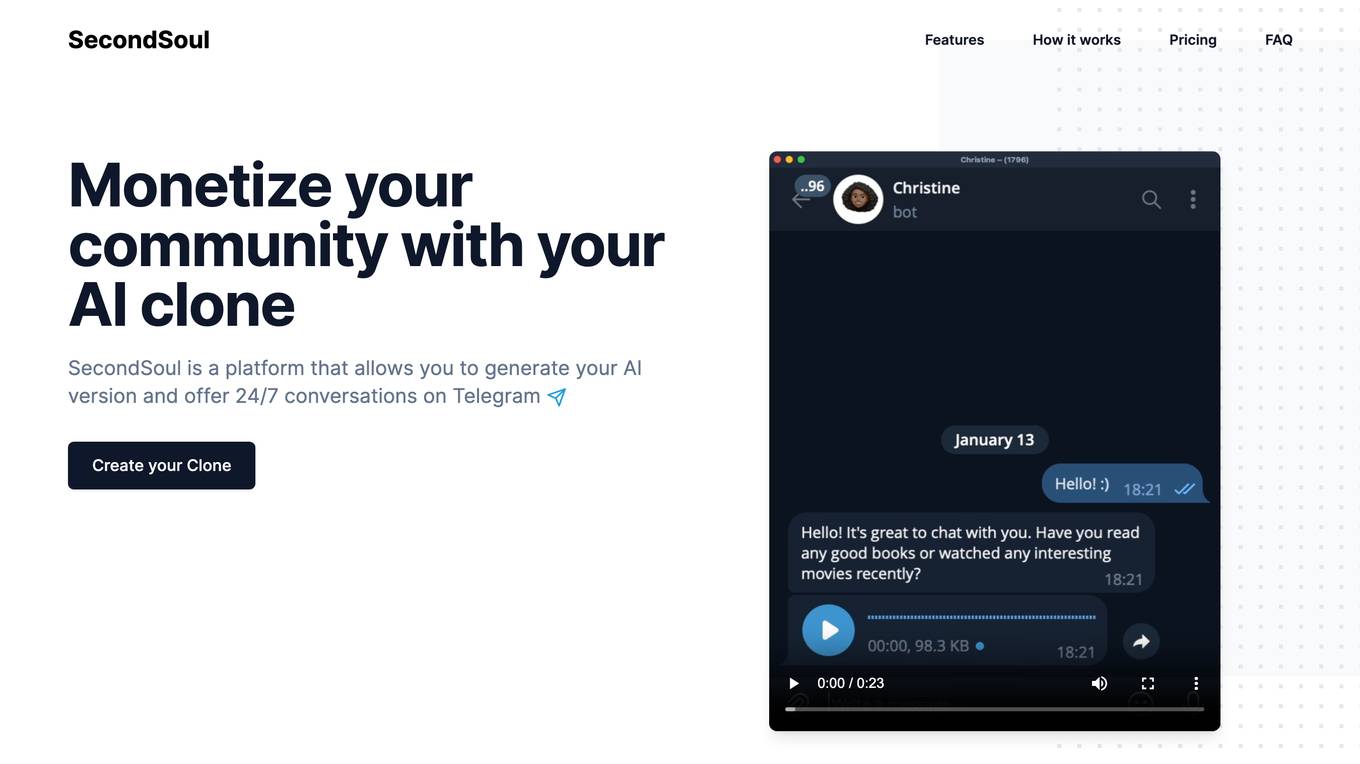
SecondSoul
SecondSoul is an AI platform that enables users to create their AI clone for engaging 24/7 conversations on Telegram. It allows users to customize their AI clone with unique traits, voice, and train it to mimic their style. The platform offers a straightforward pricing model with a revenue split, where creators earn 80% of the messages fee from users of their clone. SecondSoul aims to enhance user experience, provide companionship, and monetize community interactions through AI technology.
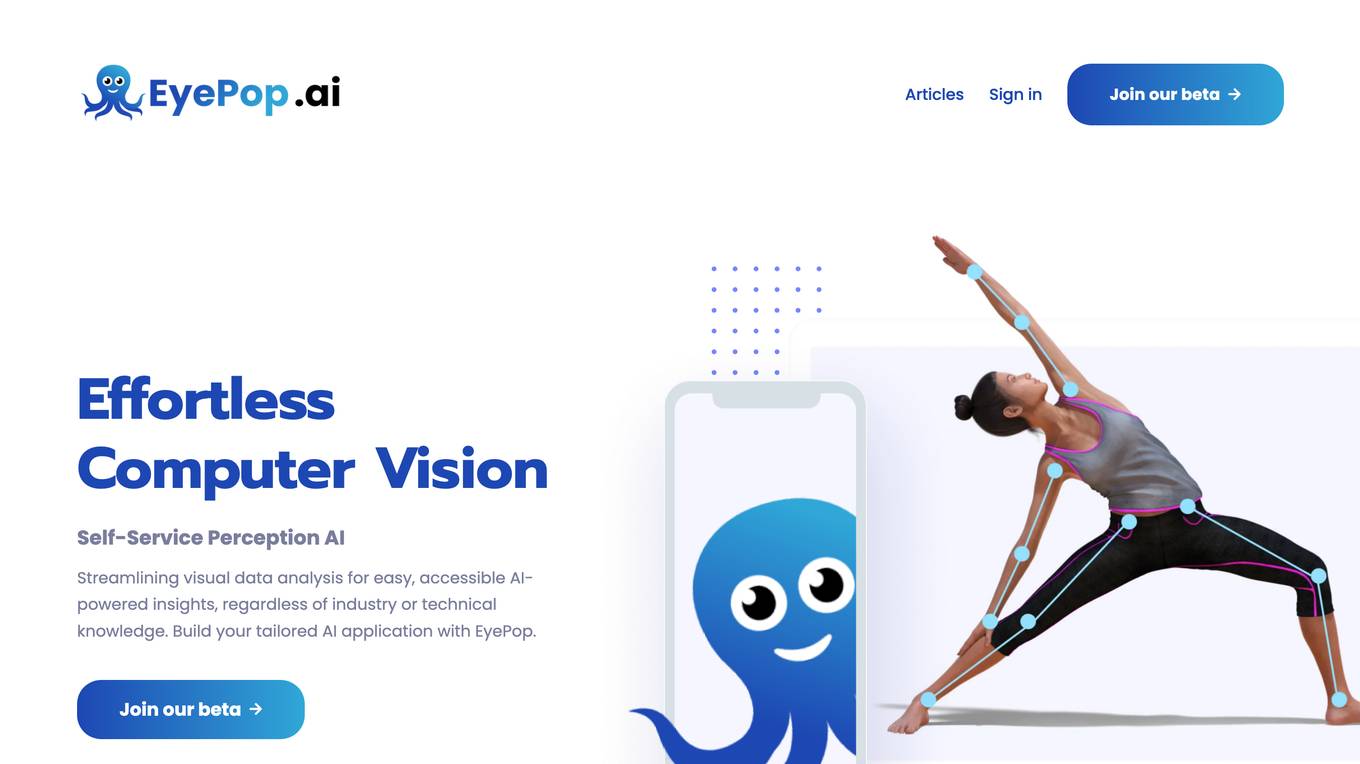
EyePop.ai
EyePop.ai is a hassle-free AI vision partner designed for innovators to easily create and own custom AI-powered vision models tailored to their visual data needs. The platform simplifies building AI-powered vision models through a fast, intuitive, and fully guided process without the need for coding or technical expertise. Users can define their target, upload data, train their model, deploy and detect, and iterate and improve to ensure effective AI solutions. EyePop.ai offers pre-trained model library, self-service training platform, and future-ready solutions to help users innovate faster, offer unique solutions, and make real-time decisions effortlessly.
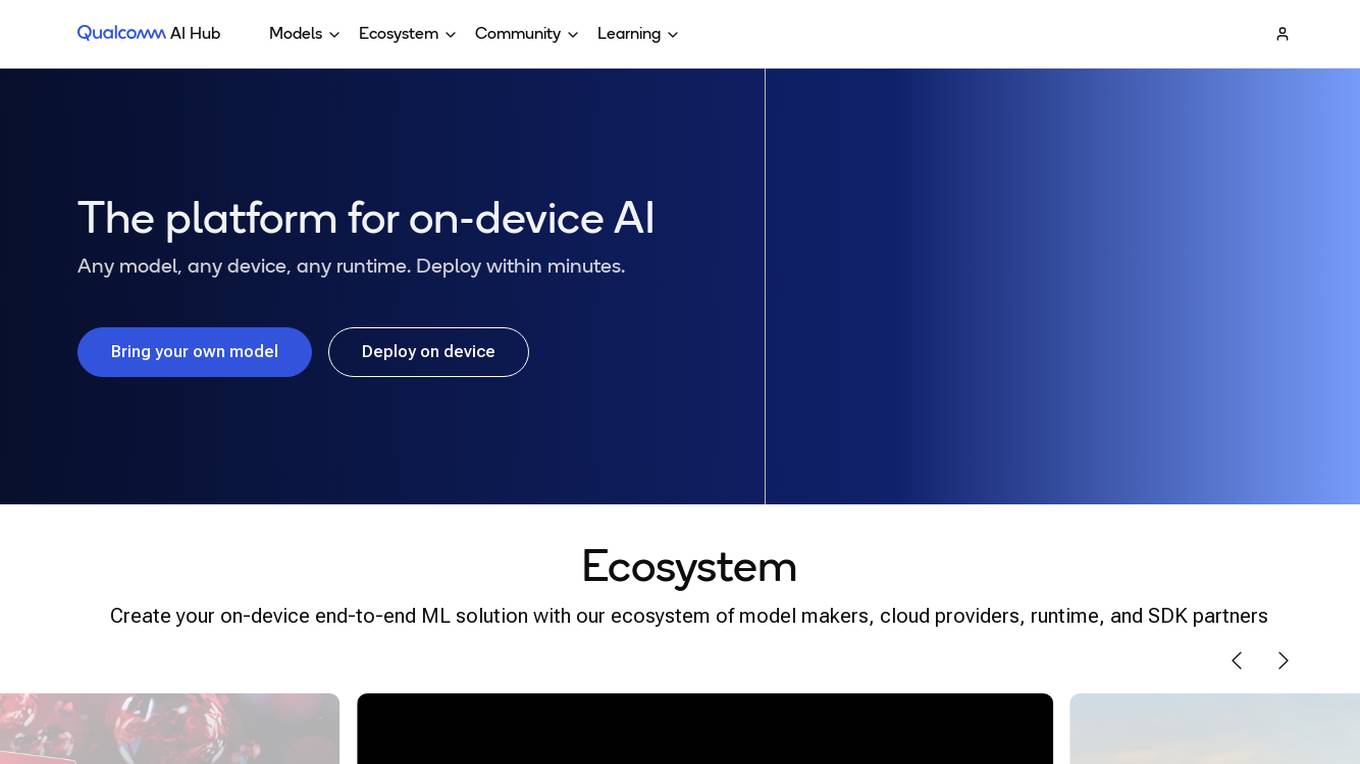
Qualcomm AI Hub
Qualcomm AI Hub is a platform that allows users to run AI models on Snapdragon® 8 Elite devices. It provides a collaborative ecosystem for model makers, cloud providers, runtime, and SDK partners to deploy on-device AI solutions quickly and efficiently. Users can bring their own models, optimize for deployment, and access a variety of AI services and resources. The platform caters to various industries such as mobile, automotive, and IoT, offering a range of models and services for edge computing.
0 - Open Source AI Tools
20 - OpenAI Gpts

Strategic Business Advisor
Expert in IT, entrepreneurship, and AI with tailored business advice
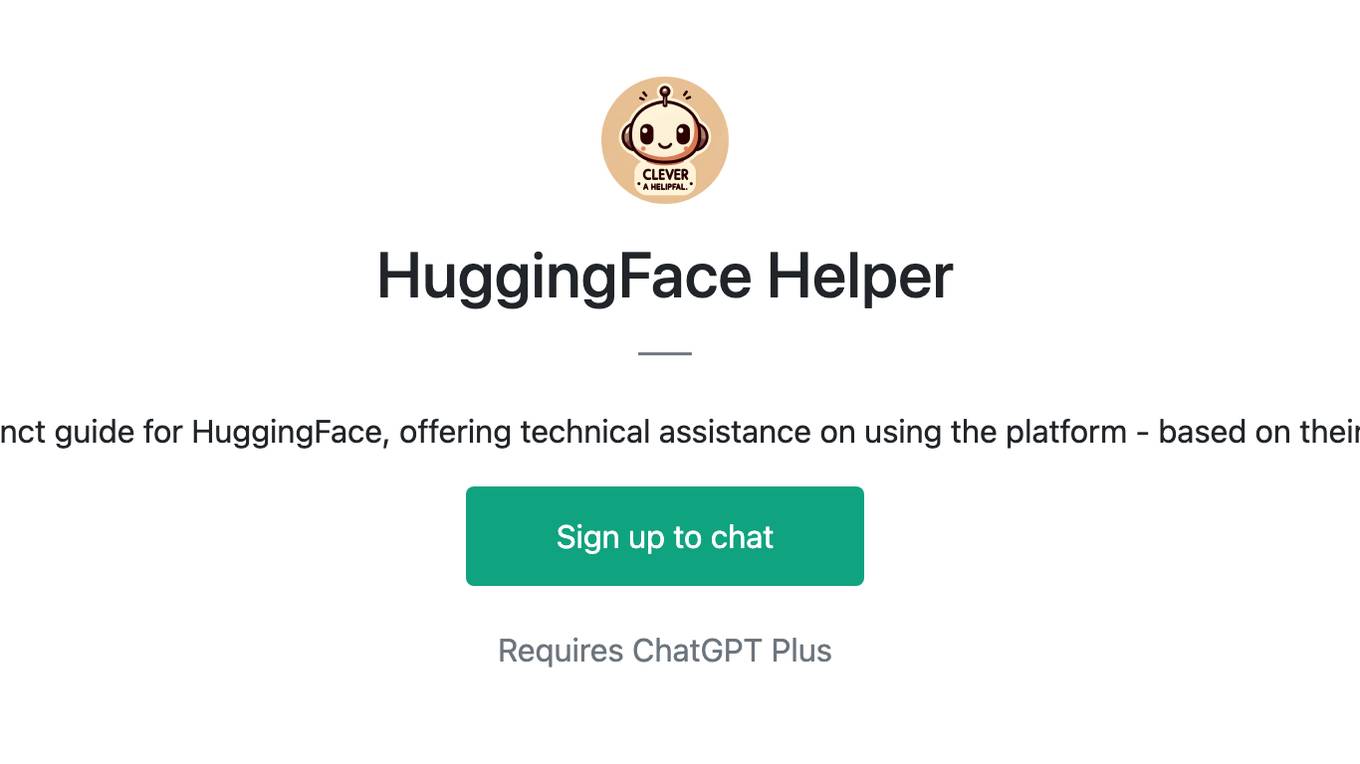
HuggingFace Helper
A witty yet succinct guide for HuggingFace, offering technical assistance on using the platform - based on their Learning Hub
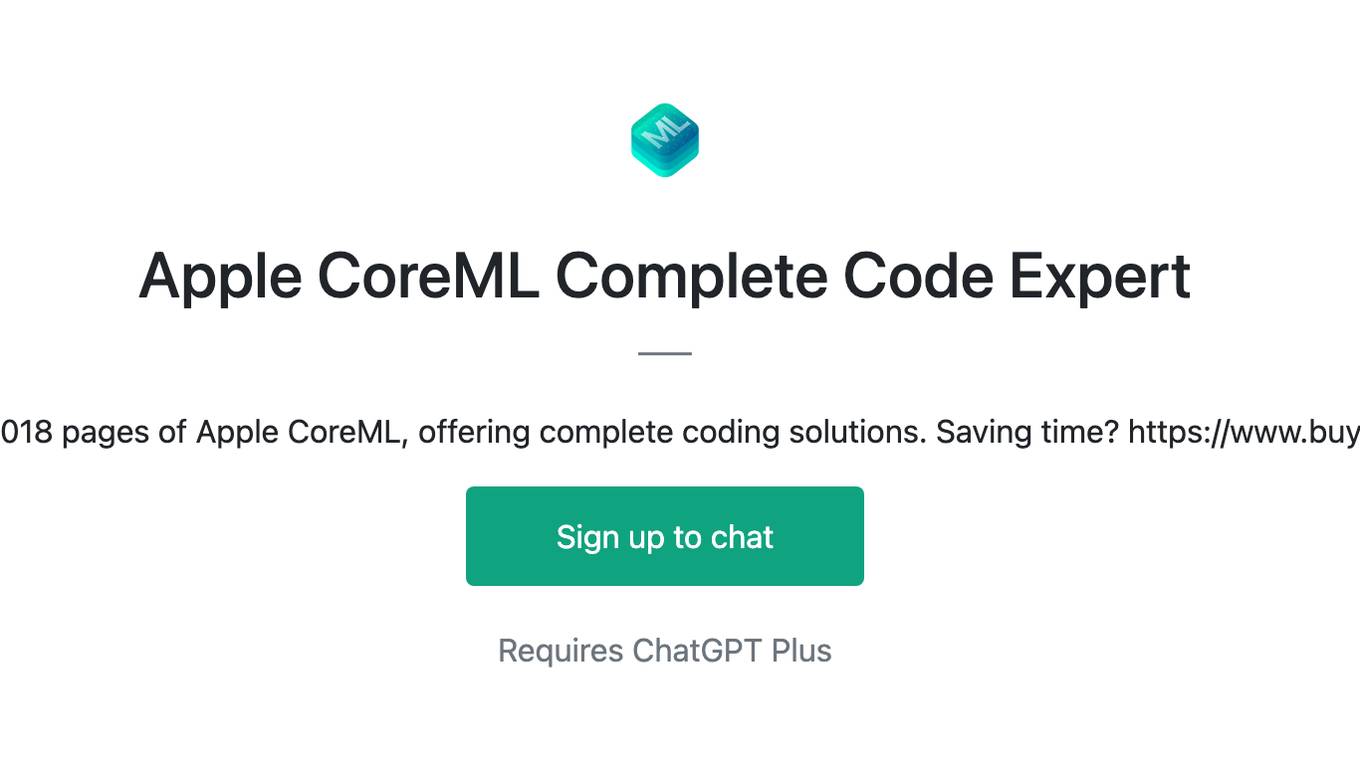
Apple CoreML Complete Code Expert
A detailed expert trained on all 3,018 pages of Apple CoreML, offering complete coding solutions. Saving time? https://www.buymeacoffee.com/parkerrex ☕️❤️
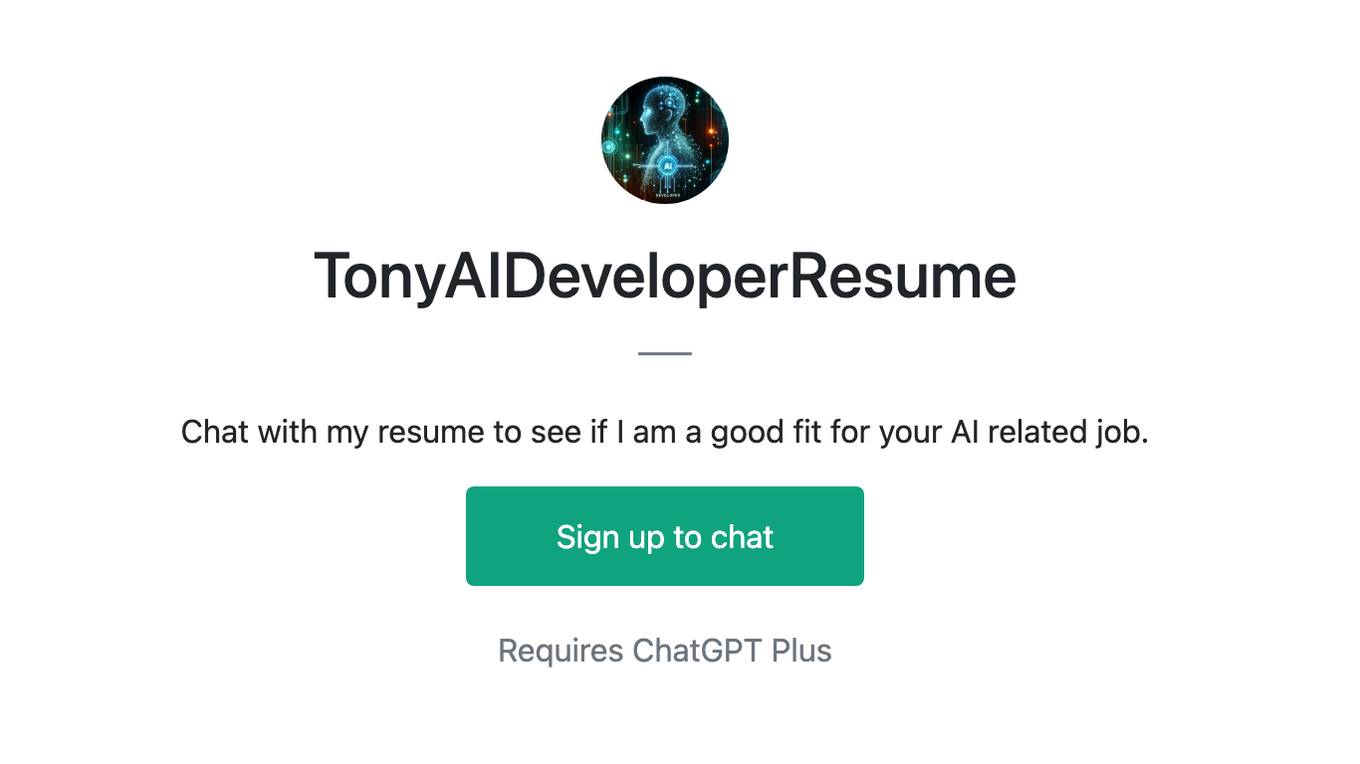
TonyAIDeveloperResume
Chat with my resume to see if I am a good fit for your AI related job.

Data Engineer Consultant
Guides in data engineering tasks with a focus on practical solutions.
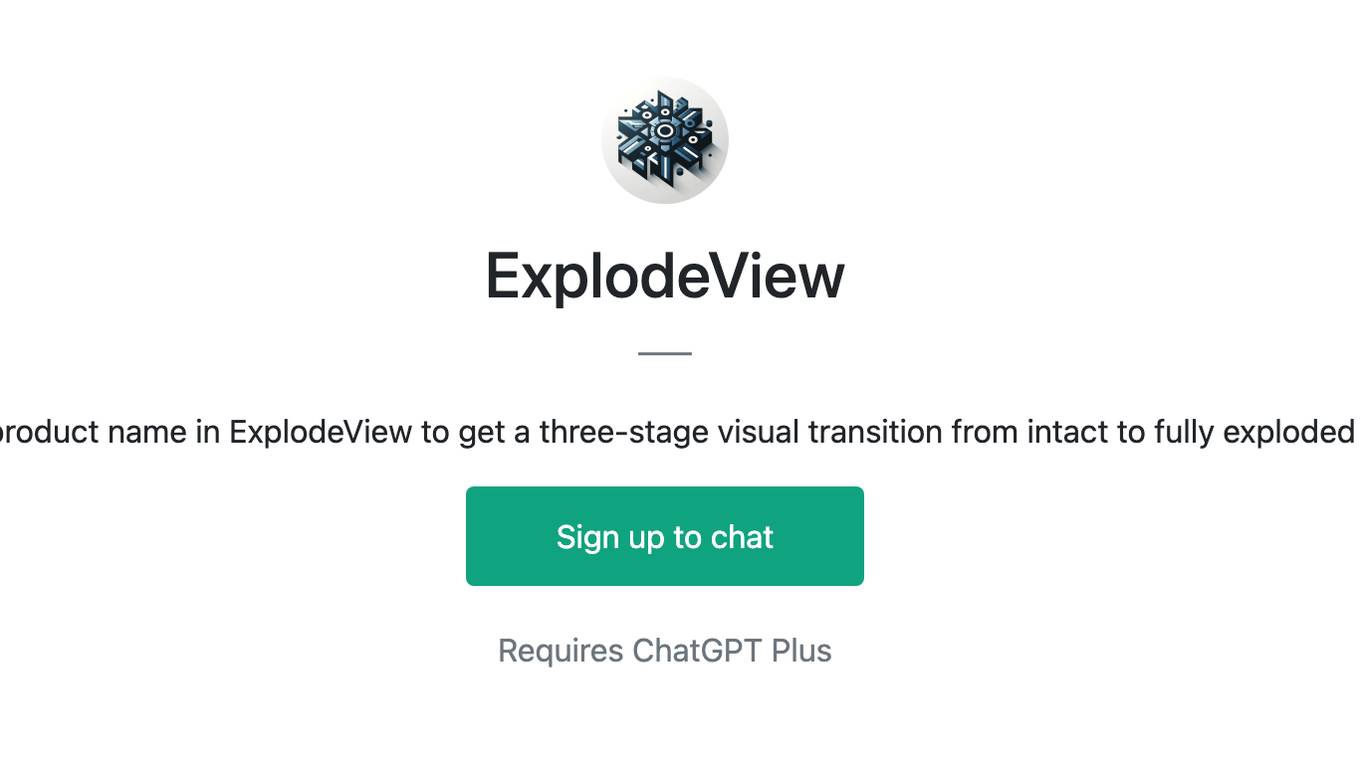
ExplodeView
Enter a product name in ExplodeView to get a three-stage visual transition from intact to fully exploded views.
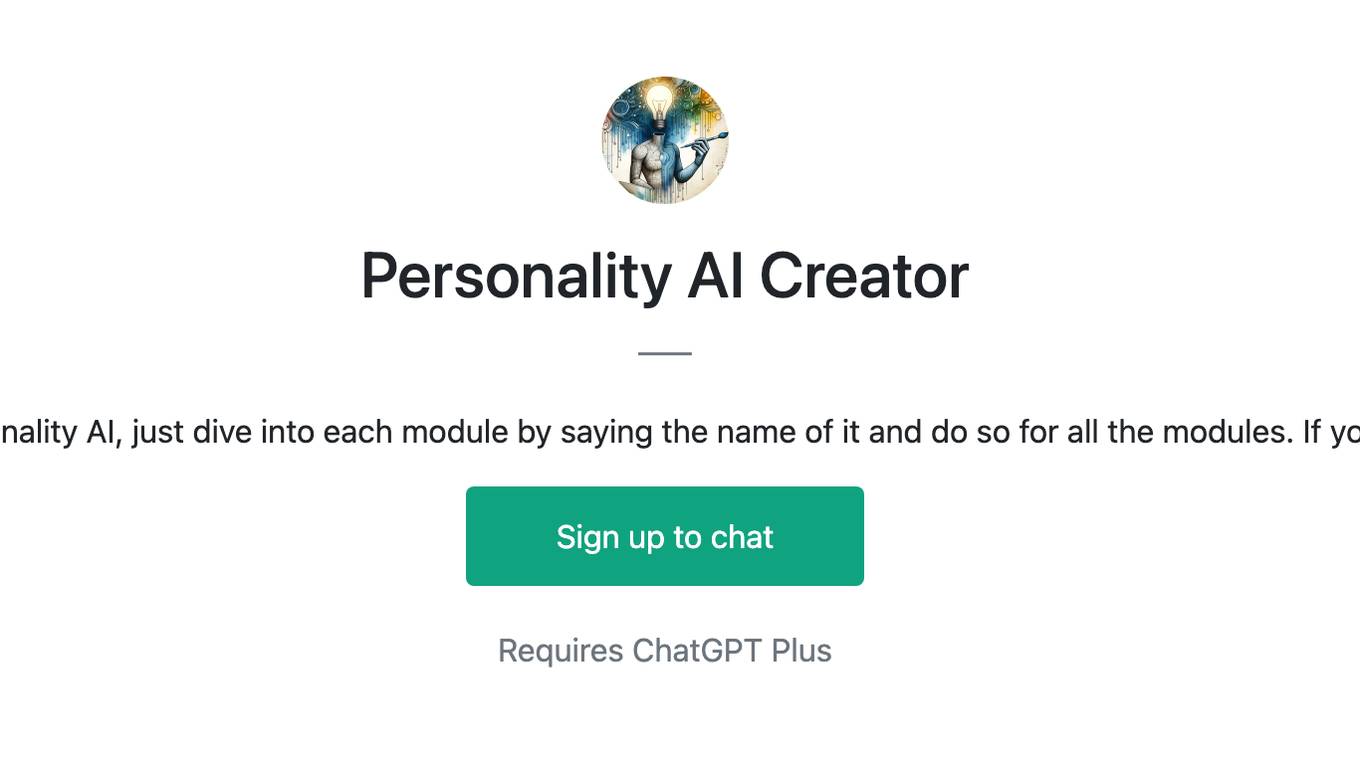
Personality AI Creator
I will create a quality data set for a personality AI, just dive into each module by saying the name of it and do so for all the modules. If you find it useful, share it to your friends

How to Train a Chessie
Comprehensive training and wellness guide for Chesapeake Bay Retrievers.

Poke Competitive Pro Guide
A Pokémon competitive build expert, sourcing data from Smogon for single and double battles.
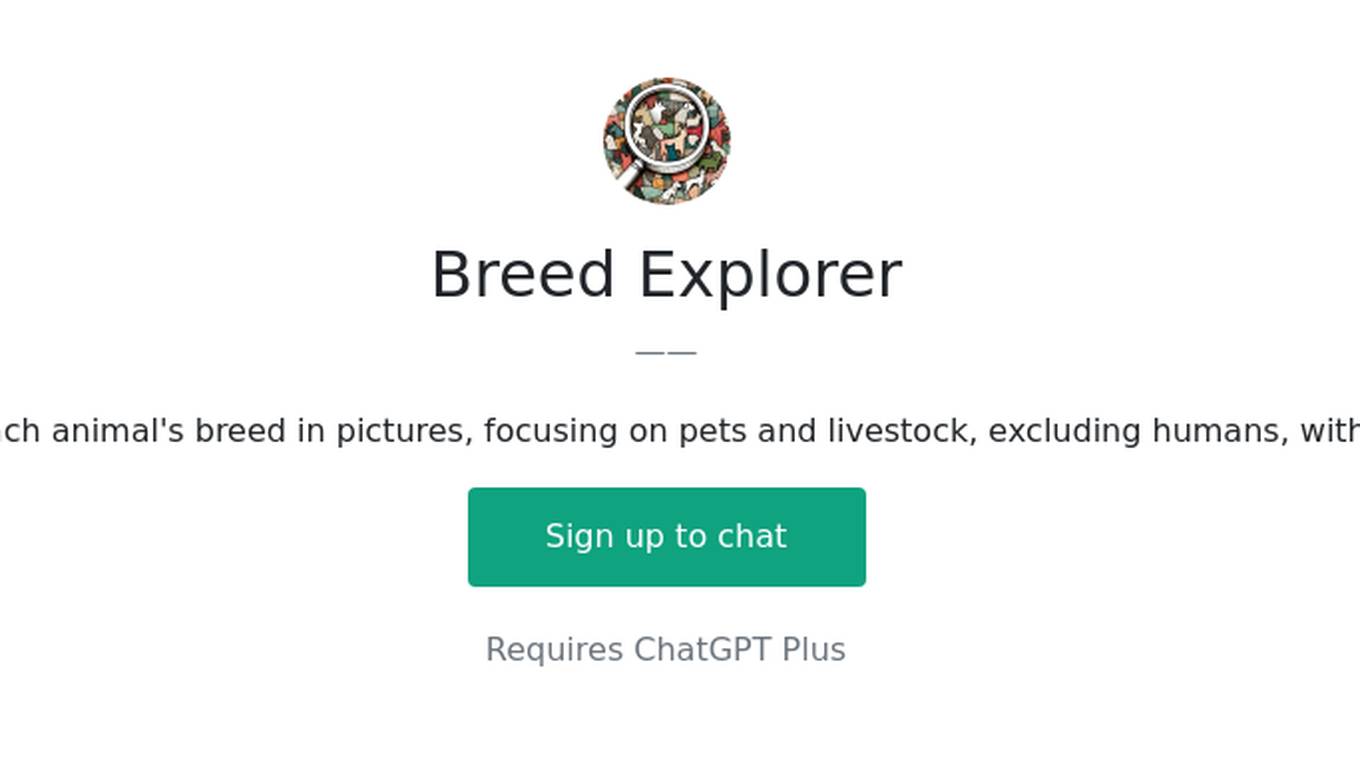
Breed Explorer
Identifies each animal's breed in pictures, focusing on pets and livestock, excluding humans, with care tips.

Solution to Any Problem
I will help you prepare and deal with any crisis now and in the future



